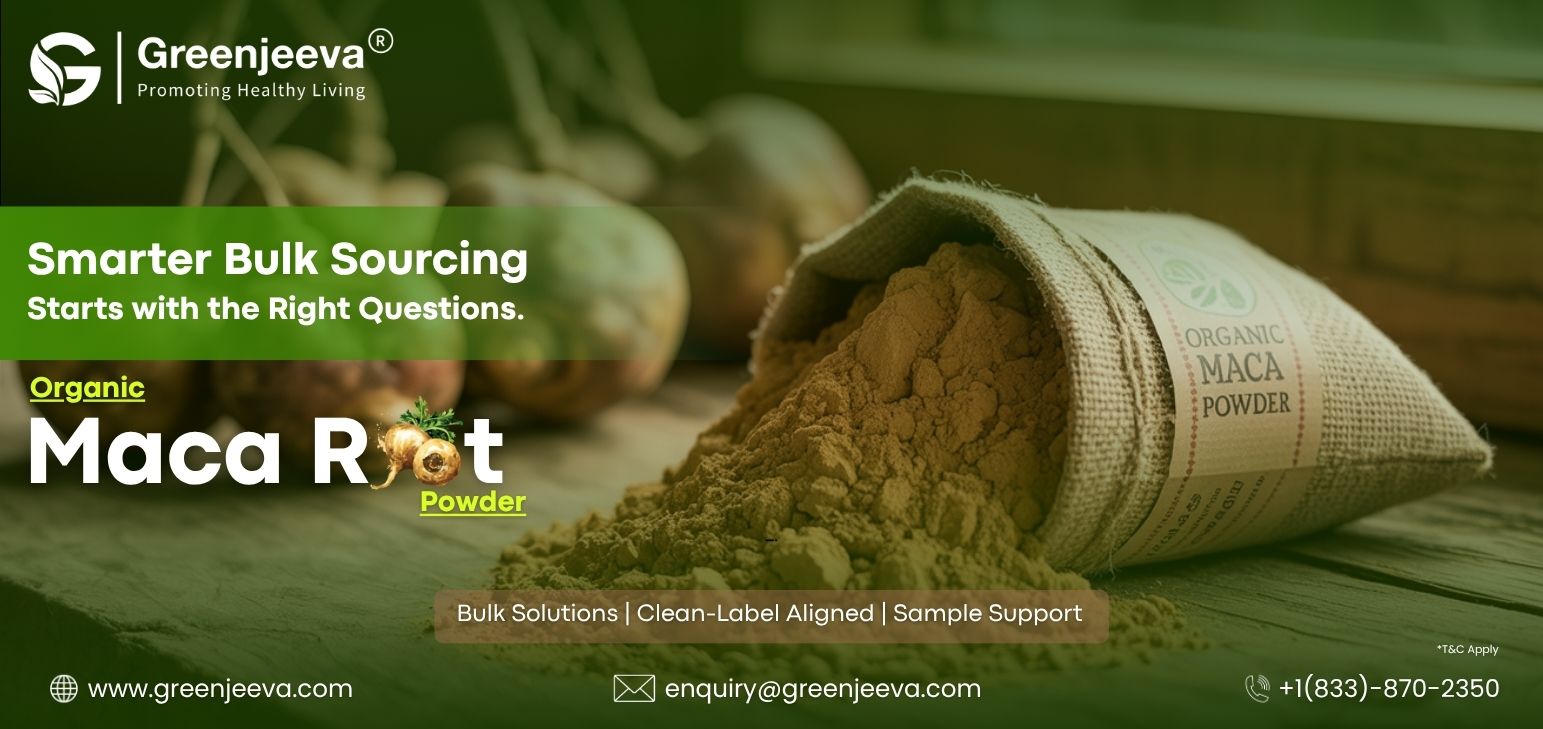
There was a time when Organic Maca Root Powder was a niche adaptogen, tucked into obscure herbal blends or DIY smoothies. That’s over.
Today, Maca has become a staple in:
- Hormonal health formulas (especially for women and men over 30)
- Pre-workout and performance blends
- Mood and stress support supplements
- Functional food and beverage innovation
- Clean-label, plant-based wellness products
As the global wellness market expands and the demand for bulk Organic Maca Root Powder grows, so does the pressure on procurement teams to get it right—not just cheap.
Most bulk buyers think they’re safe if the ingredient is labeled “organic” and “Peruvian.” But not all Organic Maca Root Powder is created equal.
Behind the scenes, here’s what’s actually happening in the supply chain:
1. Organic claims without traceable certification
2. Mislabeling of yellow maca as red or black
3. Adulterated powders with starch or maltodextrin
4. Poor post-harvest drying, leading to microbial issues
5. Variability in macamides and macaenes (bioactive compounds that give maca its functional value)
And yet, many buyers don't ask the right questions—until a product fails QA testing or delays a launch.
In 2025, the best buyers aren’t chasing the lowest price. They’re chasing predictability, purity, and partnerships that last. Here’s what that looks like:
Brands know that maca sits on the front lines of their value proposition. Whether it’s a testosterone booster or a mood-regulating adaptogen, the quality of maca defines the end product.
Sourcing teams are aligning with QA, R&D, and marketing from day one to make sure the Maca Root Powder they buy supports every layer of the product promise.
The best buyers request:
- COA from an ISO/IEC 17025 accredited lab
- Macamides & macaenes profile
- Organic certificate (USDA, EU, etc.)
- Pesticide residue and heavy metal report
- Allergen statement and non-GMO confirmation
- Country of origin & harvest batch records
Because in a clean-label, regulation-sensitive world, docs aren’t paperwork—they’re protection.
Pro Tip: If your supplier can’t deliver all this without hesitation, it’s time to reevaluate.
Raw Maca Powder is minimally processed and retains its native profile, but may be harder to digest for some users.
Gelatinized Maca Powder, on the other hand, is pre-cooked—easier to digest and often preferred for capsules or high-potency supplements.
Then there’s color variation:
- Yellow Maca: Most common, general vitality and balance
- Red Maca: Often used for hormonal support (especially women)
- Black Maca: Associated with stamina and performance (popular in male-focused formulas)
Knowing your end-use will inform the ideal spec. The best bulk buyers already know this—or have a supplier who does.
There are real-world consequences of treating Organic Maca Root Powder bulk sourcing like a checklist.
- A sports nutrition brand launched a maca-based pre-workout, only to discover elevated yeast and mold levels after launch.
- A wellness startup used a generic “organic maca” source—only to fail NPN registration in Canada due to inconsistent actives.
- A beverage company discovered starch-based adulteration, which triggered a product recall.
These aren’t stories of bad luck. They’re stories of overlooking the right sourcing strategy.
Not promotions. Not price. Process.
- Can they trace your batch to the harvest level in Peru?
- Do they test every batch and share reports openly?
- Can they customize mesh size, packaging, or moisture specs?
- Is their documentation regulatory-ready, across regions?
The suppliers worth working with are the ones that behave less like commodity vendors—and more like supply chain partners.
If you're scaling in 2025, every ingredient matters. And none more so than Organic Maca Root Powder, which now plays a starring role in countless clean-label formulations.
Buyers who want speed, consistency, and scale need to move past the "price-per-kilo" mindset. They need partners who can back up every spec with data—and every claim with documentation.
Whether you're launching your next hero SKU or reformulating to meet stricter regional standards, it’s time to partner smarter.
Here’s your takeaway:
- Revisit your current Maca Root Powder supplier.
- Audit your documentation library.
- Ask your QA team what their biggest pain points are.
- Explore sourcing models built for compliance, consistency, and clean-label integrity.
Because the future isn’t just organic. It’s traceable. It’s tested. It’s trusted.
**The Food and Drug Administration has not evaluated these statements. This product is not intended to diagnose, treat, cure, or prevent any disease. **